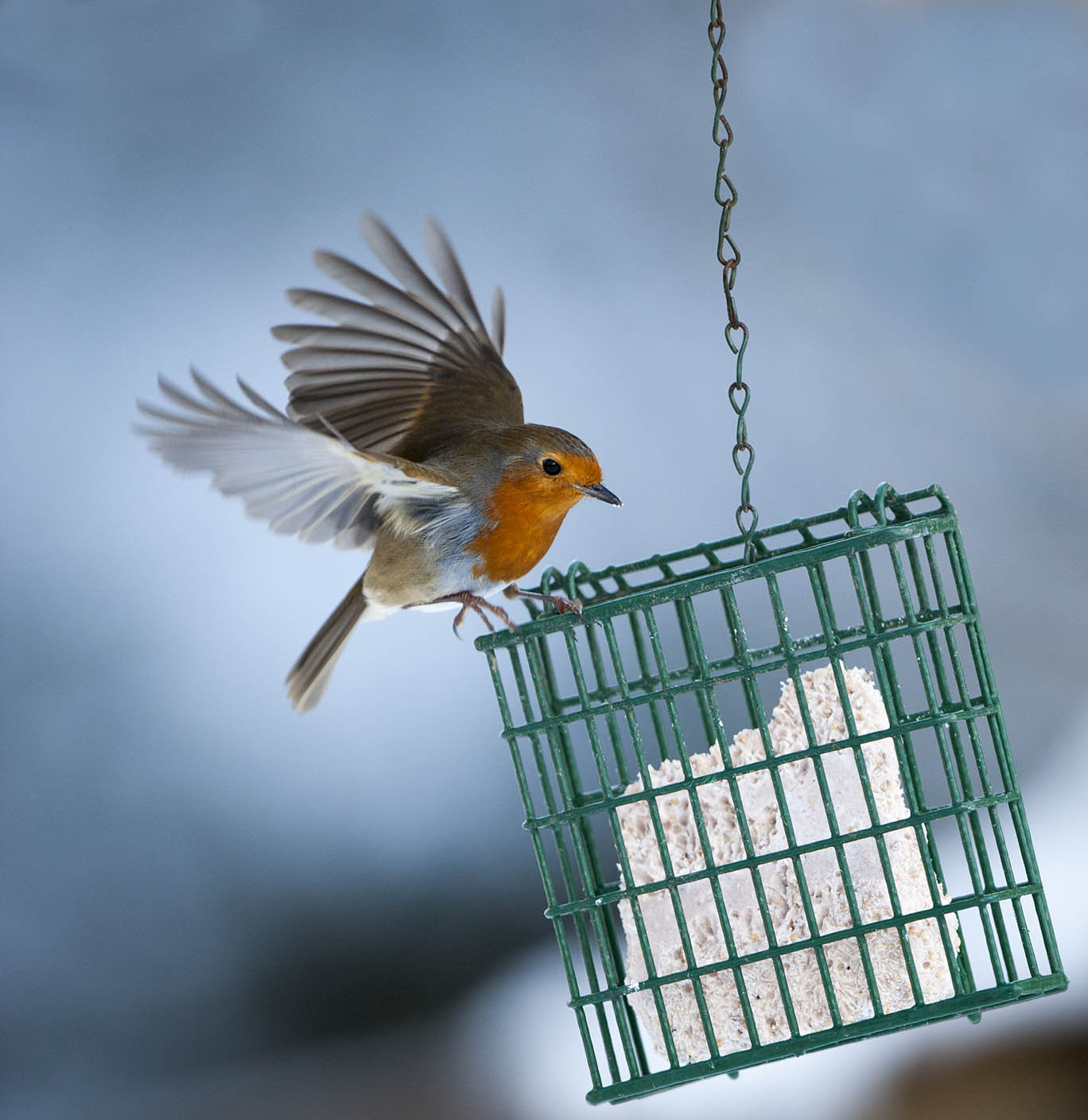Winter is on its way and those frosty nights are drawing in. It is a tricky time of year for garden birds as they are starting to fatten up for the colder months: this might seem like an easy and welcome prospect to us, but as birds are much smaller and have a higher metabolism than we do, staying warm and snug can be quite a mission.
Here are the top three ways birds survive the ordeal!

1 A new set of feathers
With autumn comes a brand new wardrobe. Birds will shed their summer plumage, which is now tattered around the edges, and grow new feathers. During this autumn moult some birds will gain up to 70% more feather weight than in their summer plumage, allowing them to keep warmer for longer. When the chill kicks in, birds can fluff up their new downy feathers to trap in the air which they will then heat with their own bodies.
2 Scaly skin
Scales are a fantastic adaptation for dealing with cold: not only does this tough, keratin-scaled area mean that their legs are less prone to injury, the tight structure of the cells means that they do not let out as much heat as the rest of the body. Birds really are incredible creatures as they can restrict the flow of blood to their legs meaning that their temperature does not drop to the icy levels of the autumn or winter air.
3 Torpor
This is a special technique similar to hibernation but not as extreme. Torpor means than birds can slow their body functions for several hours at a time in order to conserve heat and energy. This process, which involves decreasing the body temperature and reducing the heart and metabolic rate, comes with problems as birds will not be able to fly away from predators in their stupefied state; however, it is an amazing tool to have in your repertoire in the face of stormy weather.
How can I help?
Keep your feeders full
Grubs and bugs can be difficult to come by during the latter half of the year. Help birds by restocking your feeders each day: by replenishing your seed, feed and suet at a set time, birds will come to know that they can rely on your garden as a great source of sustenance when times get tricky. If you plan on going away, it’s a good idea to reduce the amount of feed you leave out in the week leading up to your trip – that way, birds will know to find another source of food during this time.
Provide the right feed
Searching for a meal and shivering to keep warm mean that birds use a lot of energy. Help birds to conserve their 40°C body heat by putting out fat and protein-rich foods. Suet balls and pellets provide a well-needed blast of fat to plump birds up and keep their organs insulated. Peanuts are also great as they are highly-calorific and packed with protein. Remember to replace any old feed regularly as frequent rainfall can allow food to go mouldy.
Plenty of shelter
Evergreen trees and shrubs are an excellent way to provide shelter from ice and cooler winds. Birds will often use empty nestboxes as places to keep out of the cold, so autumn is the best time to invest in one. Although it’s tempting to obscure your nestbox with foliage to make it appear safer for birds to roost, a clear opening allows birds to keep a lookout for predators.



